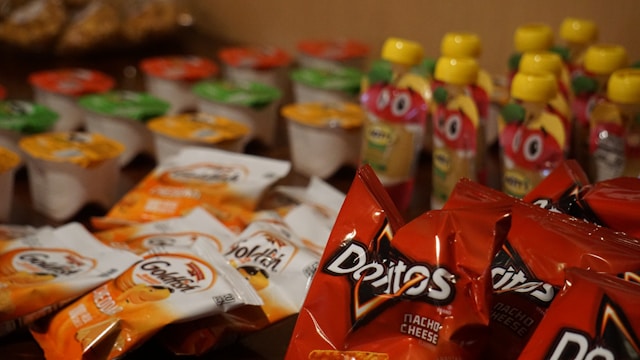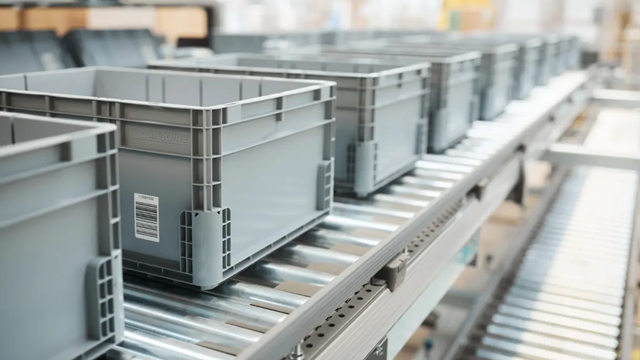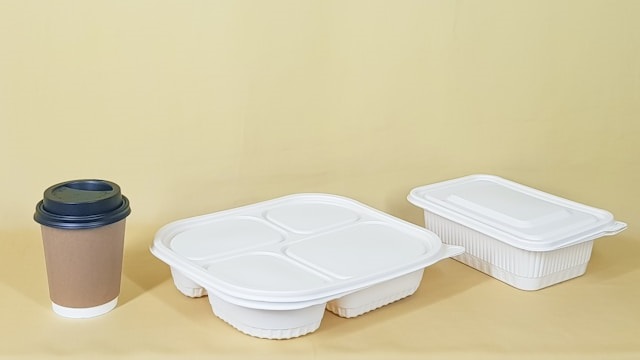Comprehensive Guide to Polymer Containers: Types, Applications, and Advantages
1. Introduction to Polymer Containers
What Are Polymer Containers?
Polymer containers are packaging solutions made from synthetic or natural polymers. These materials, derived from petroleum-based or bio-based sources, offer a versatile, cost-effective, and durable alternative to traditional packaging materials such as glass and metal.
Importance of Polymers in Modern Packaging
In industries like food and beverage, pharmaceuticals, and cosmetics, polymer containers play a crucial role in ensuring product safety, longevity, and convenience. With advances in polymer science, these containers now include eco-friendly, recyclable, and biodegradable options.
2. Types of Polymer Containers and Their Applications
2.1 Polyethylene (PE) Containers
Polyethylene is one of the most widely used polymers in packaging due to its flexibility, durability, and moisture resistance.
High-Density Polyethylene (HDPE)
Known for its strength and resistance to chemicals, HDPE containers are used for milk jugs, detergent bottles, and industrial packaging.
Low-Density Polyethylene (LDPE)
More flexible than HDPE, LDPE is often used for squeezable bottles and film packaging.
2.2 Polypropylene (PP) Containers
PP is heat-resistant and offers excellent chemical resistance, making it ideal for microwaveable food containers, pharmaceutical packaging, and reusable plastic containers.
2.3 Polyethylene Terephthalate (PET) Containers
PET is widely used in the beverage industry due to its lightweight, transparency, and recyclability. It is the primary material for water and soda bottles, as well as food packaging trays.
2.4 Polystyrene (PS) Containers
PS is available in both rigid and foam forms. While rigid PS is used for disposable cups and food trays, expanded polystyrene (EPS) is commonly used for insulation and lightweight protective packaging.
2.5 Polyvinyl Chloride (PVC) Containers
PVC is highly durable and resistant to moisture, making it suitable for pharmaceutical packaging, shrink wraps, and industrial containers. However, concerns about its environmental impact have led to reduced use in food packaging.
2.6 Biodegradable and Compostable Polymer Containers
With increasing environmental concerns, biodegradable polymers such as polylactic acid (PLA) and polyhydroxyalkanoates (PHA) are being developed for sustainable packaging solutions. These materials break down naturally under industrial composting conditions.
3. Industry-Specific Applications of Polymer Containers
3.1 Food and Beverage Industry
Polymers like PET, HDPE, and PP are extensively used for beverage bottles, dairy packaging, and food storage containers due to their lightweight, durability, and safety.
3.2 Pharmaceutical and Healthcare Sector
Pharmaceutical packaging requires materials with high chemical resistance and sterility. PP and HDPE are commonly used for medicine bottles, blister packs, and IV bags.
3.3 Cosmetic and Personal Care Industry
Luxury and everyday cosmetic products use PET, PP, and acrylic polymer containers for lotions, shampoos, and perfumes, offering both functionality and aesthetics.
3.4 Chemical and Industrial Packaging
HDPE and PVC containers are preferred for storing hazardous chemicals, lubricants, and cleaning agents due to their resistance to corrosion and leaks.
3.5 Agriculture and Horticulture
Polymer containers are widely used in seed storage, fertilizer packaging, and plant pots due to their weather resistance and lightweight properties.
4. Advantages of Polymer Containers Over Traditional Materials
4.1 Lightweight and Durability
Polymer containers significantly reduce transportation costs due to their lightweight nature while offering high impact resistance.
4.2 Cost-Effectiveness
Compared to glass and metal, polymers offer a more economical solution for mass production and packaging.
4.3 Chemical Resistance
Polymers like HDPE and PP provide excellent resistance to acids, alkalis, and other chemicals, making them ideal for industrial applications.
4.4 Recyclability and Sustainability
Advancements in polymer recycling technologies have improved the reusability of materials like PET, promoting circular economy initiatives.
5. Challenges and Environmental Concerns
5.1 Plastic Waste Management
Despite their benefits, polymer containers contribute to global plastic waste issues. Proper disposal and recycling infrastructure are essential for minimizing environmental impact.
5.2 Recycling Limitations
Certain polymers, like PVC and PS, are difficult to recycle, leading to landfill accumulation and pollution. Research in alternative biodegradable polymers is crucial for sustainable solutions.
5.3 Emerging Eco-Friendly Alternatives
Biodegradable plastics and plant-based polymers are gaining traction as industries shift toward environmentally responsible packaging solutions.
6. Future Trends in Polymer Container Technology
6.1 Innovations in Sustainable Polymers
New materials such as bio-PET and biodegradable PLA are being developed to reduce reliance on fossil fuels and improve decomposition rates.
6.2 Advances in Smart Packaging Solutions
Smart polymer containers with features like freshness indicators, antimicrobial coatings, and IoT-enabled tracking are shaping the future of packaging technology.
7. Conclusion
Polymer containers have revolutionized the packaging industry by offering lightweight, durable, and cost-effective solutions for various applications. While challenges related to plastic waste and recyclability persist, advancements in sustainable polymers and smart packaging are paving the way for a more environmentally friendly future.
References
- Andrady, A. L. (2017). ‘The plastic materials used in food packaging.’ *Philosophical Transactions of the Royal Society B.*
- Hopewell, J., Dvorak, R., & Kosior, E. (2009). ‘Plastics recycling: challenges and opportunities.’ *Philosophical Transactions of the Royal Society B.*
- Ellen MacArthur Foundation (2021). ‘The New Plastics Economy: Rethinking the Future of Plastics.’
- European Bioplastics (2023). ‘Biodegradable Plastics: Market Development and Innovations.’









